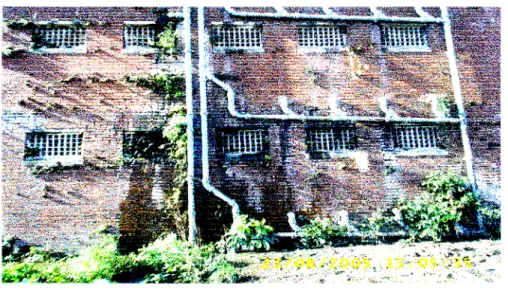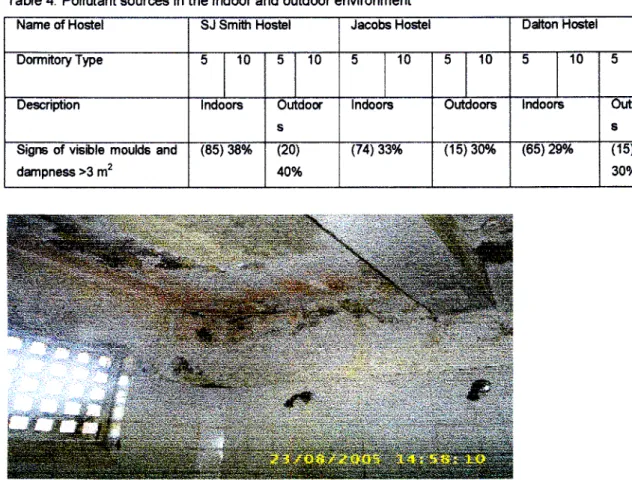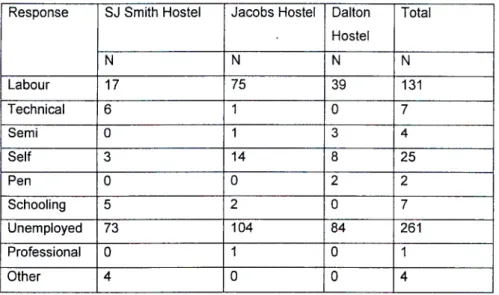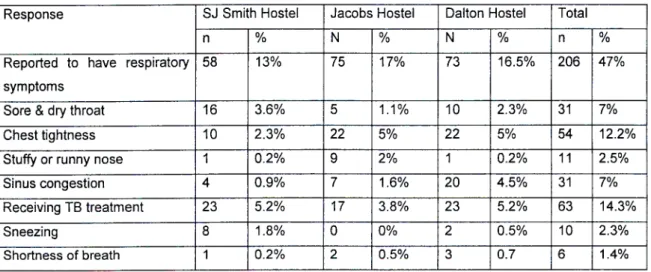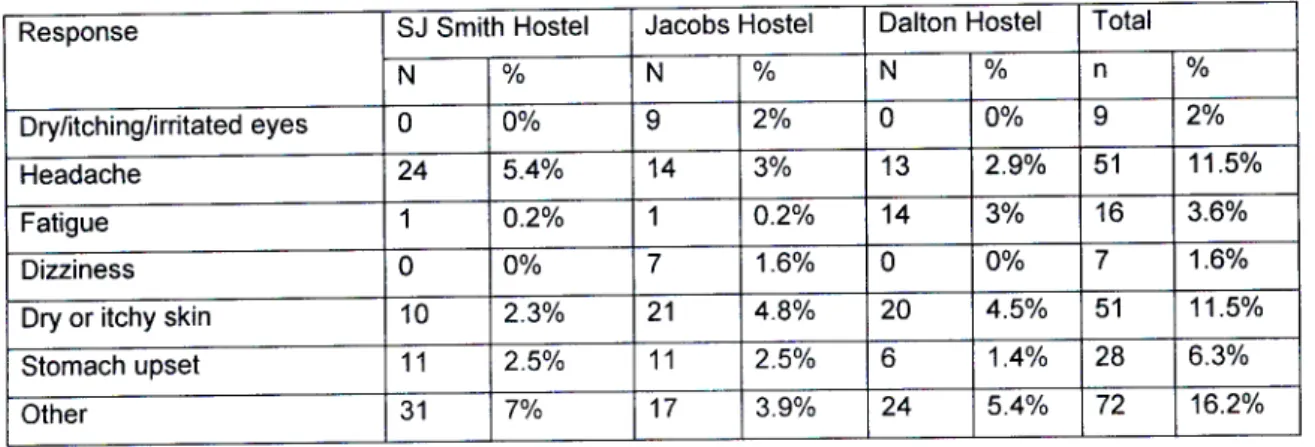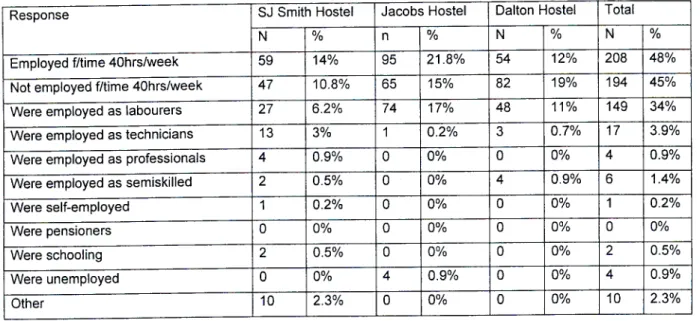Lack of access control in the hostels, aggravated by the socio-economic demands of the living environment, e.g. At all levels of the analysis, the hygienic condition of the building was highly supportive of the development of self-reported symptoms.
By dividing the 10-/or 15-bed type dormitories in an effort to increase privacy, the 5-bed type dormitories were created in the majority of the residences. In the Durban Metro area, which was the study area, for example, [in SJ Smith residence], the official number of beds provided was 4408, but the best estimate of the population was 5500.
- Environmental assessment methodology and limitations of the study
- Environment, health and well-being
- The occurrence of indoor dampness and moulds in residential buildings
- Physical requirements for mould growth
- Health effects due to indoor environmental exposure
- Smoking habits and their health impact on smokers and non - smokers
- General housing conditions and related diseases
- Crowding, housing and health
- Health effects in the indoor environment due to outdoor environmental
- Health effects in the indoor environment due to outdoor climate change
- Ventilation standards and efficiency
- Sanitation availability and utilization
- Legal requirements pertaining to public buildings used for residential
Vulnerability in Intergovernmental Panel on Climate Change (IPCC) terms also includes degree of exposure, sensitivity and adaptability (McCarthy et al, 2001). To address the objectives of the current study, a questionnaire (Appendix D) was administered to quantify vulnerability factors as described in Chapter 4 (Results), which are discussed later in the study.
- Study Area
- Ethical Approval
- Study Design
- Sample Selection
- Sampling Methods
- Temperatures and Humidity
- Legislation
- Limitations of the study
- Data Management and Statistical Analysis
A study was conducted on the quality of the block hostel environment (inside and outside) through visual inspection (Appendix E). Before the study, participants were asked to sign a written consent form. Each day, at the end of sampling, samples were brought to the laboratory and placed in an incubator (25 °C) with the lid facing down (for 5 to 7 days).
In the laboratory, each smear was plated on the surface of the culture (MEA, DG-18). The Incidence Risk Rate (IRR) was used to determine the relationship between exposure factors and outcomes in the indoor environment of the selected hostel blocks.

Visual Inspection
Damp or standing water: Clogged storm drains and blocked gutters were very common in most blocks and as a result there was evidence of standing water near drains and in gutters. Certain areas of the building were defective, but some renovations were observed in all three hostels as an ongoing process of hostel renovation. Unsatisfactory conditions/Water damage: There were signs of microbial growth in toilets, laundries, bathrooms, sleeping areas and in kitchens also known as common areas.
HVAC System Equipment: There was evidence of dust, dirt and microbial growth in ductwork in all selected blocks. In terms of the spill, this was widespread, despite some areas having been previously repaired.
Legal requirements
Ventilation with openable windows covered 6% in 5-bed dormitories and 3% in 10-bed dormitories. Observations, as shown in Table 4 and Figure 4, showed that signs of mold were visible on the interior and exterior walls and ceilings of the 5- and 10-bed dormitories, and on the interior and exterior walls of the cleaning blocks. Inside the buildings they were dirty, particularly in the overcrowded washrooms in the 10-bedroom communal blocks where 80 residents were said to be using a single washroom block which provided 8 shower roses, 3 sinks, 4 wash basins, 1 urinal and 5 toilets . , and with this kind of pressure it was almost impossible to maintain hygiene standards.
This overloading of the laundry facilities may have put stress on the entire system, leading to clogs, burst pipes, and system malfunction. This was most noted in bathrooms and toilets, where more signs of visible mold were observed (Table 4).
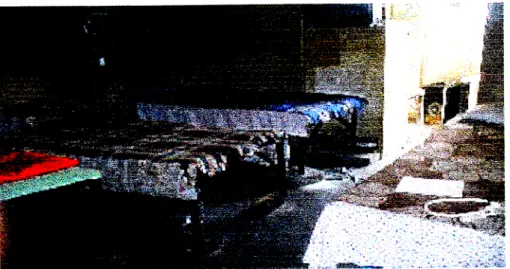
Questionnaire Survey
A study of population demographics in the Durban Metro area revealed an age dominance between 15 and 20 years. Therefore, this data provided sufficient evidence to suggest that a majority of respondents were permanent residents of the hostels. Sixty percent (60%) of respondents who were away from the hostel once a month were from Dalton Hostel.
This information indicated that a majority of respondents were permanent residents who spent most of their time in the hostels. However, it was noted that only 6% of respondents were concerned about noise nuisance (Table 23).

Moulds in the indoor environment
To the untrained eye, many Aspergillius species are similar or identical, and misidentification is common. Spores belonging to the genus Aspergillius are common components of the external aerospore, but their isolation is often not as common as that of Cladosporium, Penicillium and fungal spores. Furthermore, some Aspergillius species are a serious concern in health care facilities and for immunocompromised individuals due to their infectious potential (Storey et al, 2004).
Some are very common in the environment, but a few species have very unique ecological niches. Although many nuclei may exist in an unseptated hyphen, they are not separated by cell walls (septa) (Burton & Engelkirk, 1996).
Temperature and Humidity
Descriptive Analysis of data
- Health data matched with the respondents' demographic profile
- Surface and Air Samples analysis (Tables 24- 25 and Figures 12- 13)
While a smaller number of respondents earning above R800 per month reported any respiratory problems. Surface molds derived from indoor samples of 5-bed dormitories totaled 39% of the total sample, and spores sampled indoors accounted for 61%. In 10-bed dormitories, surface mold samples accounted for 42% of the total sample, while airborne spores reached fifty-eight percent (58%).
Conclusions drawn from Tables 24 and 25 indicate that the total number of spores in the air was higher in almost all the blocks compared to surface molds. Mold bacteria in the 10-bed type dormitories increased in SJ Smith residence compared to the other two residences, reaching 54% for airborne spores and 49% for surface mold.
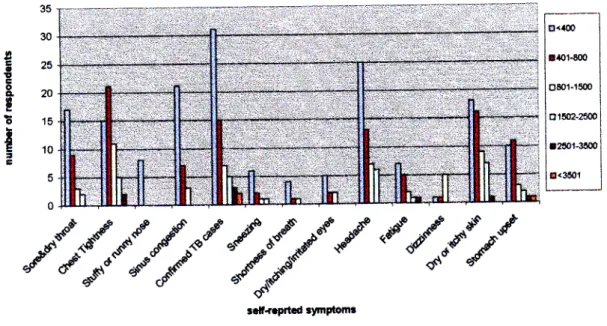
Statistical Analysis of Data
- Exposure levels
- Outcomes
- Confounding factors
- Relationships between exposure factors and outcomes
The mean rankings of self-reported symptoms by bed types in the selected hostel blocks of the three block hostels revealed the following. There were no significant associations between respiratory symptoms and the self-reported TB cases in the selected hostel blocks (Table 34). The following exposure factors were very supportive in the development of self-reported symptoms (total symptom score) in the selected hostel blocks.
According to Table 37, certain exposure factors were very supportive in the development of self-reported symptoms (total symptom score) in the selected hostel blocks. The following exposure factors were not supportive in the development of respiratory symptoms and were; individuals' concerns about the cleanliness of the hostel, the use of the dustbin, structural defects, floor levels, bed types, crowding and the overall surface forms.
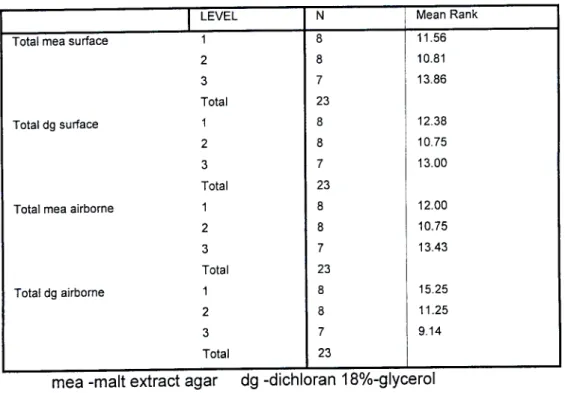
General observations, space, density and legal requirements
When the environment is degraded, it affects us all in the long run, but the poor are the first to suffer (Fasheun, 2004). The environments where people live in the selected blocks were far below the minimum standards in relation to the legislation (Tables 2, 3, 4 & 5). The reason for this may be that the legislation was not correctly observed or misinterpreted, which resulted in the observed undesirable situation.
It was obvious that certain actions of both the administration and the residents were against the law and did not serve the purpose of protecting the vulnerable. The results of the study revealed that the trend of low income among hostel users could indicate the cause and extent of the problem.
Demographics and the hostel environment
This was evident from the fact that these factors were highly supportive in the development of self-reported symptoms among respondents. There was no consistency in total surface mold and airborne spore counts per floor level within hostel blocks or between hostels. The same type of mold genus discovered in one hostel was found in the other two hostels.
The same type of mold found in the surface samples was found in the air samples. This evidence was sufficient to suggest that ventilation was not adequate in the 10-bed dormitories.
The relationship between confounding factors, health outcomes and
Last but not least, there was concern about the total number of surface molds in the indoor environment of hostels, which also supported the development of symptoms reported by respondents. A review of the available literature has shown that indoor and outdoor environments are interdependent and that environmental factors in indoor and outdoor environments can influence the development of indoor molds in residential buildings. In addition, mold and dampness in buildings are associated with the development of respiratory health problems in the occupants of such buildings.
In addition to the above, the review of the relevant legislation has shown that the law provides for the protection of residents exposed to both indoor and outdoor environments, provided that the relevant law is complied with. This evidence was sufficient to suggest that the indoor environmental conditions of these hostels were not conducive to health and may have been the possible cause of the health problems revealed in this study.
The Conclusions
In addition, the increase in the number of multi-storey buildings in an already limited area would hinder the free movement of air between buildings and thus affect the quality of the outdoor air.
Recommendations
Impact of housing conditions on the health of the people at al-Ama'ri refugee camp in the West Bank of Palestine. An assessment of the prevalence of mold bioaerosols in the indoor and outdoor environment of cabins in Durban, South Africa. Group reports and proceedings of the South Durban multi-stakeholder environmental management held in the Durban City Jubilee Hall on 4 May 1995.
Evaluation of the Enviro Loo composting latrine in an informal settlement area in Greater Johannesburg. Preliminary results of exposure and health effects measurements of the Vaal Triangle Air Pollution Health Study. The results of the study will be published in the scientific literature and available to administrators upon request.
After completing the study, you will be informed about the potential risks you may be exposed to in relation to air quality and building designs.
